What is Chlorine Rash?
Chlorine rash is more popularly known by the name swimming pool rash since most individuals who encounter this rash have been swimming in the pool.
A chlorine rash is usually noted after the person comes in contact with chlorine. A chlorine rash does not take long to appear on the skin for it usually develops a few hours after exposure from the chlorine solution in water. The rash usually fades in a couple of days.
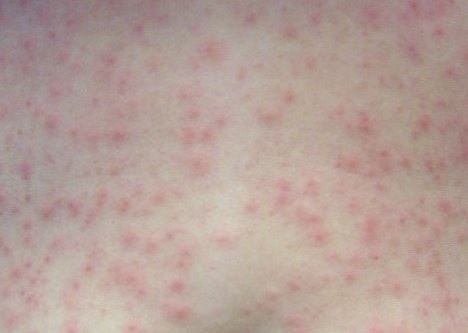
Chlorine is a type of chemical with disinfectant properties to eliminate pathogens that resides in the water and bacteria. Chlorine is widely used in waters by many individuals for public facilities like swimming pools, hot tubs, and water parks.
Many people who get in these public facilities do not experience any chlorine rash. However, some may get affected or rather develop symptoms of chlorine allergy. It mainly depends from one individual to the other.
What are the Symptoms of Chlorine Rash?
Chlorine rash will start with severe itching of the skin and sometimes may lead to other skin irritations and allergic reactions. Since many people swim together in public pools or other water facilities, substances like sweat and urine may combine with the water and develop into powerful irritants like tricholaramine, dichloramines, and monochlaramines. Some individuals develop the chlorine rash right after the contact or after a few hours. Symptoms still depend from one person to another.
Other symptoms that can be acquired are:
- Tiny bumps all over the skin that later on becomes patches that are red in color which can form a sore
- Painful, puffy, dry and itchy eyes due to the allergic reaction from the fumes of the chlorine
- Sneezing and coughing
- Reddening and disturbances of the eye’s vision from the chemical
- Dry skin
- Stuffy nose
- Scales on the skin
- Stomach ache and a burning feeling somewhere in the gastrointestinal tract
- Itchy nose due to the smell of chlorine
- Chest pains or having a slight problem in breathing
- Wheezing sound
- Vomiting
Too much chlorine exposure might have risk factors in developing allergic rhinitis, nasal irritation, and other respiratory problems. The epithelium in the airways will tend to become more sensitive as well due to the prolonged exposure.
This can most-likely happen to individuals whose jobs involve chlorine exposure like those of the lifeguards. Injuries of the lungs can also be possible. Other syndromes might also be accompanied together with chlorine rash such as the airway dysfunction syndromes like RADS and RUDS.
What are the Treatments for Chlorine Rash?
There are no particular methods to cure a chlorine rash but the best way for the individual is to know self-care and avoid prolonged exposure to chlorine. The first step should be washing the skin with clean water to try and get rid of any irritants present. An over-the-counter cream or ointment such as corticosteroid cream may help, depending on the prescription of the physician can be bought.
The cream must not be overused and instructions should be followed in order to be relieved right away with the itching, since it is practically the most annoying symptom of chlorine rash.
If symptoms continue to worsen or is accompanied together with other conditions, consulting a physician to have it evaluated is highly recommended.
Other treatments include:
- Medications like antihistamines
- If eyes are irritated, rinse it with clean water along with the areas around it
- Taking showers before and after periods in a swimming pool
- Reddening and dryness of the eye can be minimized with eye drops
- Applying a good amount of Vaseline to areas that are prone to chlorine rash before swimming in the pool
- Breathing of chlorine fumes should be taken cared off right away, by changing clothes and venturing outside for fresh air.
Pictures
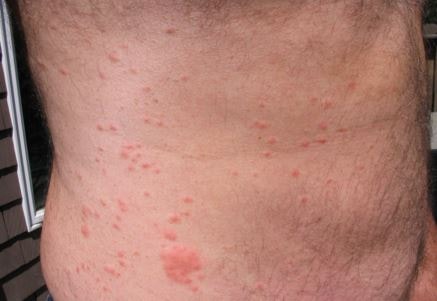
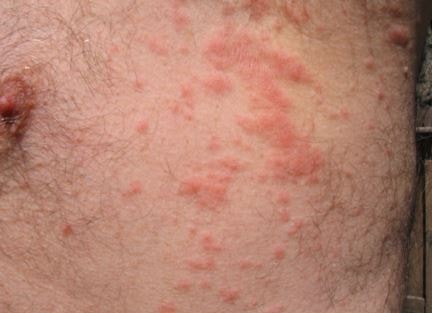
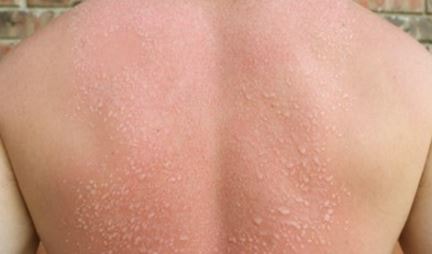
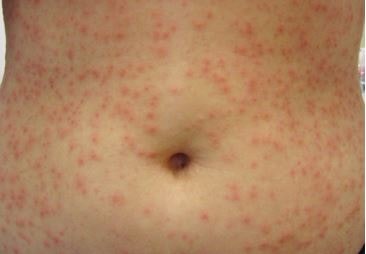
References
- Americal college of allergry, asthma and immunology -> chlorine rash: symptoms, Management and Treatment at http://acaai.org/allergies/types/allergy-myths/chlorine-allergy#section-3
- Chlorine Rash symptoms, causes, treatment, pictures at http://medicaltreasure.com/chlorine-rash/
- http://doctordecides.com/chlorine-rash/
- Donegan, Fran J.; David Short (2011). Pools and Spas. Upper Saddle River, New Jersey: Creative Homeowner. ISBN 978-1-58011-533-9.
- Krasner, Stuart W.; Weinberg, Howard S.; Richardson, Susan D.; Pastor, Salvador J.; Chinn, Russell; Sclimenti, Michael J.; Onstad, Gretchen D.; Thruston, Alfred D. (2006). “Occurrence of a New Generation of Disinfection Byproducts”. Environmental Science & Technology 40 (23): 7175–85.
- Anton Hammerl; Thomas M. Klapötke (2005), “Nitrogen: Inorganic Chemistry”, Encyclopedia of Inorganic Chemistry (2nd ed.), Wiley, pp. 55–58.

The photos are wrong with the exception of #3 sbowing the colorless bumps – this makes the content of the article questionable. However, the citation is necessary and valid. The articl is not bonfide without medical study.